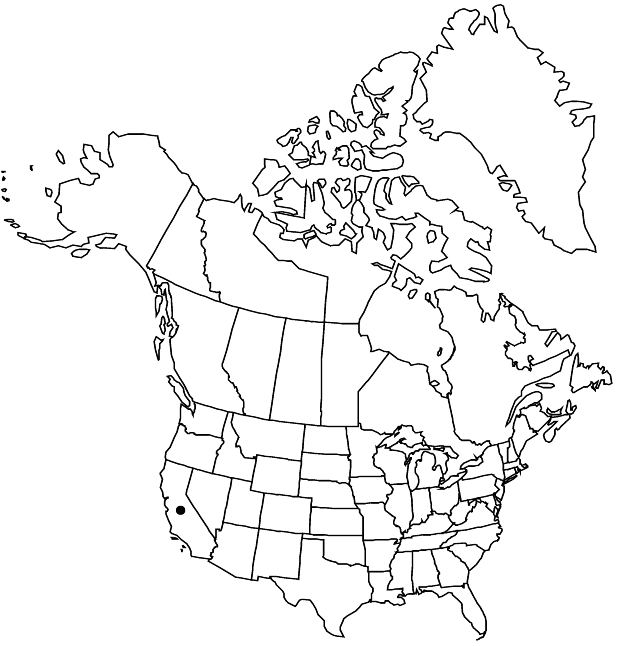Ribes canthariforme
Contr. Dudley Herb. 1: 101, plate 9. 1929 (as canthariformis) ,.
Plants 1–2.5 m. Stems erect, finely pubescent, stipitate-glandular; spines at nodes absent; prickles on internodes absent. Leaves: petiole 2.5–3.5 cm, pubescent; blade roundish, 3-lobed, shallowly cleft, 4–6 cm, base cordate, surfaces densely hairy abaxially, with wavy, long, soft hairs adaxially, lobes rounded, margins crenate, with gland-tipped teeth, apex rounded. Inflorescences erect, spike or headlike, 15–25-flowered racemes, 3–6 cm, axis densely stipitate-glandular, flowers crowded into distal 1/4–1/3. Pedicels jointed, 1–2 mm, white-villous; bracts lanceolate, 2–4 mm, white-villous. Flowers: hypanthium rose-purple, broadly urceolate, 0.5–1 mm, villous-pubescent with some gland-tipped hairs; sepals not to somewhat overlapping, spreading, rose-purple with darker veins, deltate-ovate, 2 mm; petals nearly connivent, erect, pale rose-purple, flabellate to spatulate-obovate, not conspicuously revolute or inrolled, 1 mm; nectary disc not prominent; stamens nearly as long as petals; filaments linear, 0.5 mm, glabrous; anthers yellow, ovate, 0.2–0.3 mm, apex minutely apiculate; ovary white-villous with some stipitate-glands; styles distinct to base, 1 mm, sparsely hairy proximally. Berries palatability not known, purple, globose-ovoid, 5–6 mm, lanate or glandular-hairy.
Phenology: Flowering Feb–Jun.
Habitat: Chaparral
Elevation: 300-1200 m
Distribution

Calif.
Discussion
Of conservation concern.
Ribes canthariforme is endemic to the Cuyamaca-Laguna Mountain region of San Diego County. It has quite thick leaves. Thirteen populations are known; nine of those are historic. About 70 plants have been found in the remaining populations.
Selected References
None.